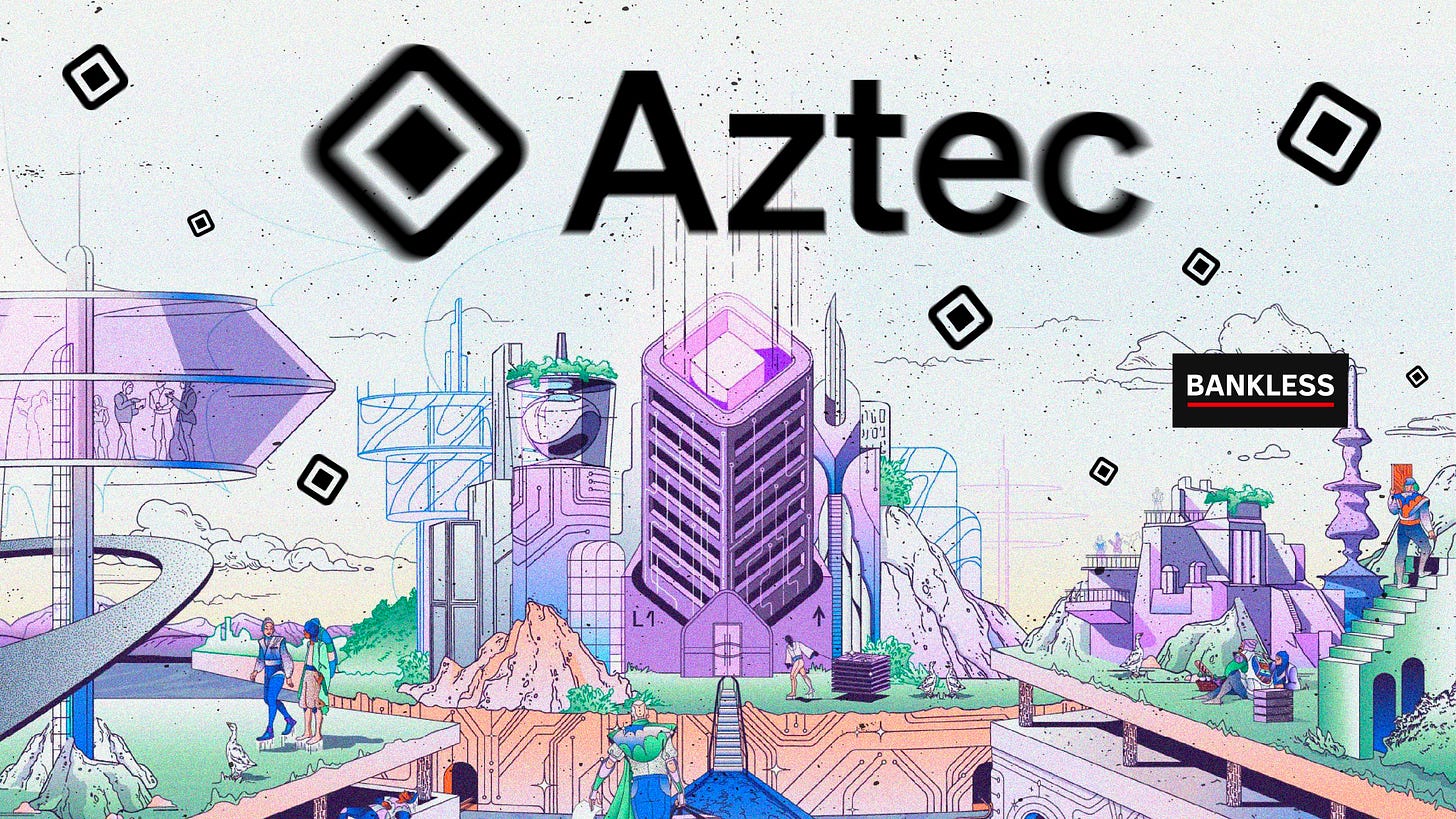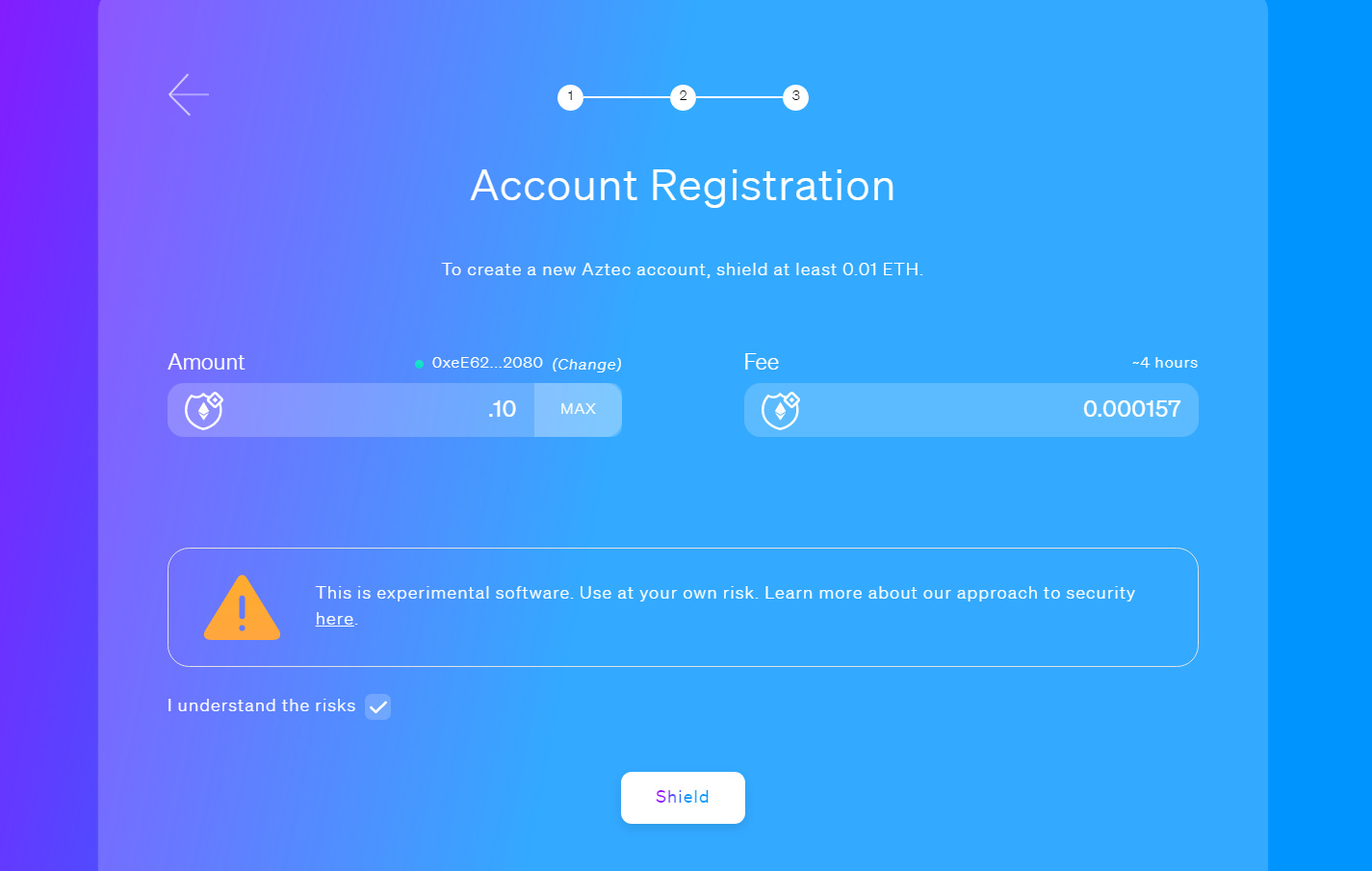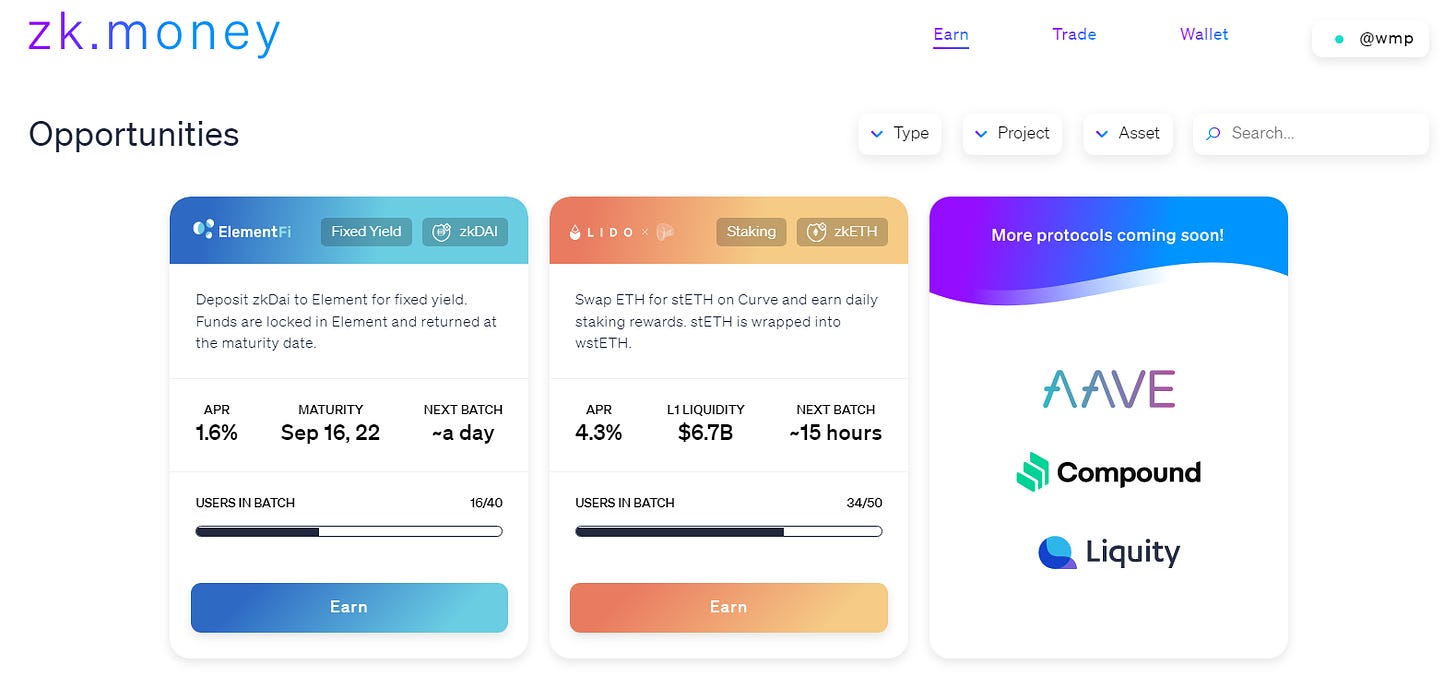It’s once-in-a-lifetime. Commemorate the Merge with a special NFT from ConsenSys.🥳 🎊
Dear Bankless nation,
Should we have the right to financial privacy?
The recent OFAC sanctions on Tornado Cash clearly show that governments don’t want to support this. They want a purview into everything.
The good news is that despite the Tornado Cash sanctions, DeFi isn’t so easily deterred. Everything’s open.
Anyone can fork Tornado’s code, and plenty of other privacy tools exist like Monero and Zcash.
Moreover, the innovation of DeFi privacy tools hasn’t stopped.
The earliest DeFi privacy products like Monero, Zcash and Tornado let users make simple, private transactions from point A to B.
But the latest in DeFi privacy go further, letting you conduct these transactions on Ethereum, meaning you can bridge, stake and earn yield in an entirely private process.
Aztec Network achieves this. It’s a new privacy layer for Ethereum.
Interested in learning more?
William wrote up a guide on how to use this new burgeoning Layer 2.
– Bankless team
Join us for Converge22, Circle’s first annual crypto ecosystem conference, taking place September 27th-30th in San Francisco! Featuring wide-ranging demos and developer workshops, plus high-powered guest speakers including Ethereum’s Vitalik Buterin, Aave’s Stani Kulechov, Mary-Catherine Lader of Uniswap Labs, Anatoly Yakovenko of Solana, and many more.
Register with code Bankless to receive $100 off your ticket!
Bankless Writer: William M. Peaster, Bankless contributor and Metaversal writer
What you do in DeFi should be your business, but right now anyone can see your on-chain actions since Ethereum transactions are totally public.
Cue Aztec Network, a privacy-focused zkRollup that lets you access L1 DeFi apps within a private L2. This Bankless tactic will show you how to use Aztec in order to access DeFi privately.
“Aztec has an offchain UTXO architecture that functions like cash. Shielding a token functionally means depositing it into Aztec’s Ethereum smart contracts, which then communicate with Aztec’s offchain UTXO state system to generate cash-like encrypted notes.
[…] When assets are deposited to Aztec, withdrawn from Aztec, sent within Aztec, or exchanged for other assets via Aztec Connect, the state tree is updated with new encrypted notes. Because no one can peer inside a note except its owner, user identity and account balance is fully preserved.” — the Aztec FAQ
Aztec Network is an Ethereum scaling solution built with privacy as its lodestar.
At the heart of Aztec is its zero-knowledge “PLONK” proving system, through which users of the zkRollup can access DeFi in anonymous fashion and with transactions that are ~100x more affordable than Ethereum L1 transactions.
zk.money is a private token transfer protocol built on top of the Aztec L2. In other words, it’s an overlay system that makes it simple to interact with the underlying zkRollup.
zk.money has helped facilitate over 250,000 private crypto transactions to date. Aztec currently has ~$2.8M in total value locked (TVL) across mainly ETH and DAI deposits, and it’s zk.money that’s made those deposits possible.

Built as an extension of zk.money, Aztec Connect is a privacy bridge for Ethereum DeFi.
What makes this privacy bridge go ‘round are Aztec Connect’s special bridge contracts, which make it possible for users to interact with L1 DeFi projects from within the private L2.
This design is powerful, since DeFi projects don’t have to port their code over and have separate distinct deployments like they’d have to with other L2s. In this way, there is no liquidity fragmentation or trust fragmentation via Aztec Connect, as it lets you access L1 DeFi’s superior liquidity and proven smart contracts but in a shielded manner.
When you make a deposit to shield crypto via zk.money, you receive encrypted notes on Aztec, e.g. zkETH or zkDAI.
If you send these notes to someone else who’s on zk.money they’ll receive zkETH/zkDAI on Aztec, and if you send the notes to someone who’s not on zk.money they’ll simply receive ETH/DAI on the Ethereum L1. In the latter case your send is also private, since the recipient will only see that the funds came from the Aztec smart contract and not your address specifically.
For now, users are limited to shielding a maximum of 5 ETH or 10k DAI per transaction. Whenever you’re ready to unshield your assets you can expect to have your withdrawal facilitated by Aztec within four hours, but if you raise your transaction fee enough you can shorten this process to around 10 minutes.
It’s recommended not to withdraw to the same address that you’ve made a deposit from. In the same vein, it’s best to stick to round nondescript withdrawal sums like 0.1 ETH, etc. For example, if you make a bunch of 0.069420 ETH deposits and withdrawals with the same address in quick succession, it’d become easy to deanonymize your address.
-
Go to https://zk.money/ and press the Shield Now button
-
On the next page click on MetaMask or WalletConnect and sign the ensuing transaction with your wallet to generate a zk.money account
-
Pick your alias, i.e. account name, and then press Register — you will then sign two more transactions to generate your account’s privacy and spending keys
-
Next you will input the amount of ETH you want to fund your new Aztec account with, check that you understand the risks, and then press Shield
-
When prompted submit your deposit transaction, and then sign the shield proof transaction — after this you can check to see when your deposit has settled at zk.money/balance
-
Go to https://zk.money/earn and sign in with your wallet
-
Review the available opportunities, which are currently fixed yields on zkDAI via ElementFi or stETH staking yields via Lido, and press the Earn button your desired option
-
On the next page input the amount of zkETH/zkDAI you’d like to deposit and then choose your transaction fee tier (Batched, Fast Track, or Instant)
-
When you’re ready to proceed press Next and carry through with the deposit steps
-
Once you’re in, keep track of your Aztec DeFi investments using the Earn Positions tab on the https://zk.money/balance page
The blockchain space is in desperate need of more privacy tools, and toward that end the Aztec Network is one of Ethereum’s most promising up-and-coming tools.
To be sure, the Aztec system is still quite young and should be approached as what it currently is — an experiment — but if crypto’s privacy frontier matters to you, then Aztec is a project worth exploring and supporting.
Going forward, look for the L2 to become increasingly decentralized and for more and more DeFi projects to embrace it.
And while this privacy zkRollup doesn’t have any token plans for now, trying it out today may position you for an airdrop in the future if one does eventually materialize.
William M. Peaster is a professional writer and creator of Metaversal—a new Bankless newsletter focused on the emergence of NFTs in the cryptoeconomy. He’s also recently been contributing content to Bankless, JPG, and beyond!
Subscribe to Bankless. $22 per mo. Includes archive access, Inner Circle & Badge.
👉 Join us at Converge22 Circle’s first crypto ecosystem conference. Use code bankless
Want to get featured on Bankless? Send your article to submissions@banklesshq.com
Not financial or tax advice. This newsletter is strictly educational and is not investment advice or a solicitation to buy or sell any assets or to make any financial decisions. This newsletter is not tax advice. Talk to your accountant. Do your own research.
Disclosure. From time-to-time I may add links in this newsletter to products I use. I may receive commission if you make a purchase through one of these links. Additionally, the Bankless writers hold crypto assets. See our investment disclosures here.



